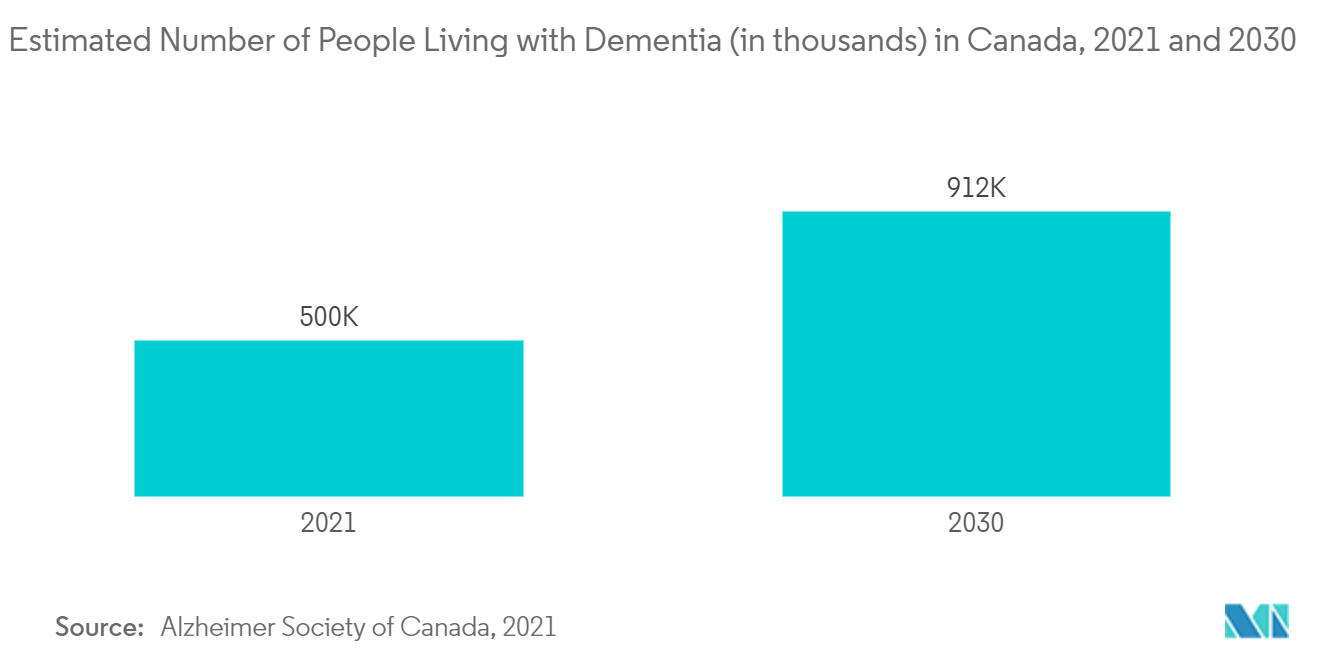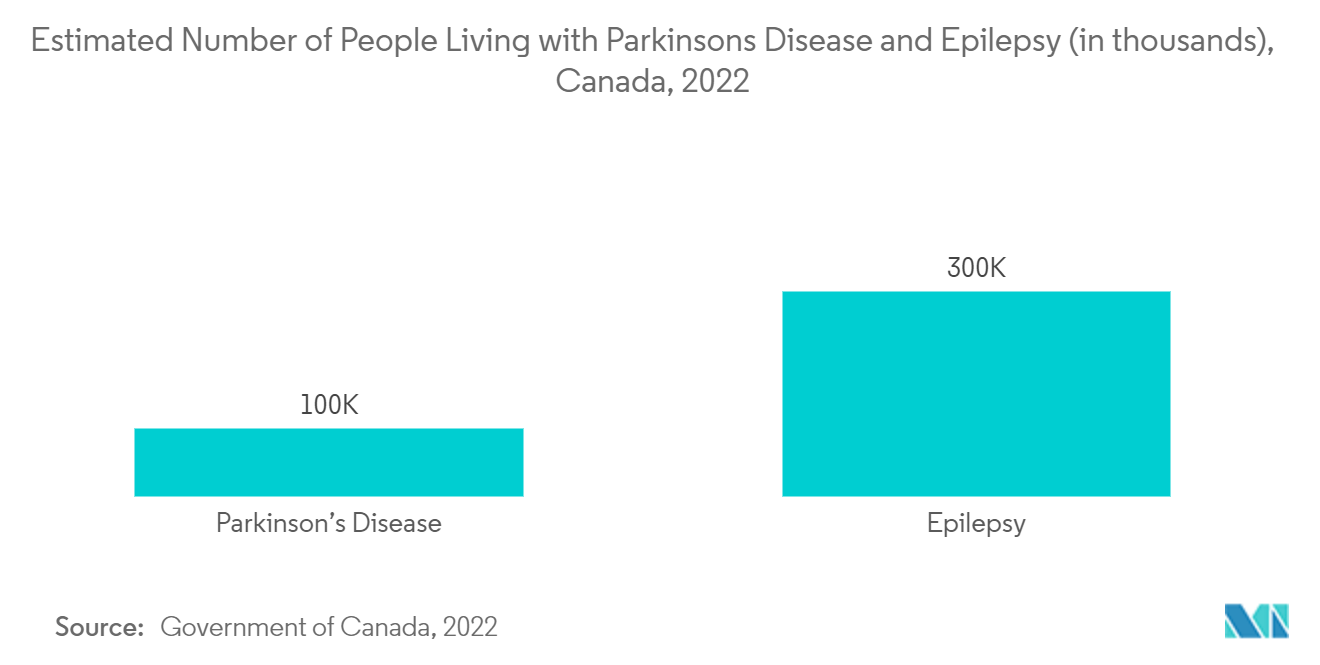Market Trends of Canada Nuclear Imaging Industry
Neurology Segment is Expected to Witness Considerable Growth Over the Forecast Period
- Neurological disorders are medically defined as disorders affecting the brain and nerves throughout the human body and spinal cord. Structural, biochemical, or electrical abnormalities in the brain, spinal cord, or other nerves can result in various symptoms.
- The common neurological disorders requiring nuclear imaging include intracranial tumors, dementia, Parkinson's disorders, and epilepsy. The factors leading to this segment's growth include the high burden of neurologic disorders, rising product approvals, and research studies of single-photon emission computed tomography (SPECT) in diagnosing neurological issues in Canada.
- The increasing number of neurological disorders in Canada is one of the major driving factors for market growth. For instance, according to the data from the Alzheimer Society of Canada 2021, over 500,000 Canadians were living with dementia, and by the year 2030, this number is expected to rise to 912,000.
- Furthermore, the data suggested that, on average, 9 senior citizens are diagnosed with dementia every hour in Canada. For people who are above 65 years of age, the risk of being diagnosed with dementia doubles every five years. The high burden of dementia in the Canadian population, especially among the elderly, is expected to boost the demand for better SPECT imaging. This is expected to increase segment growth during the forecast period.
- Furthermore, many developments in Canada include product launches and approvals, partnerships, collaborations, mergers, and acquisitions in the market for SPECT applications. For instance, in May 2021, the Canadian Association of Nuclear Medicine (CANM) authorized the use of brain single photon emission computed tomography (SPECT) imaging to evaluate many common neurologic and psychiatric indications, including Alzheimer's disease disorders. Therefore, owing to the increasing cases of neurological disorders and product approvals related to neurological disorders in Canada, considerable segment growth is anticipated over the forecast period.

SPECT Radioisotopes Segment is Expected to Witness Significant Growth Over the Forecast Period
- Single-photon emission computed tomography (SPECT) scan is an imaging test that shows how blood flows to tissues and organs. It can be used to diagnose seizures, strokes, stress fractures, infections, and tumors in the spine. The radioisotopes typically used in SPECT to label tracers are iodine-123, technetium-99m, xenon-133, thallium-201, and fluorine-18. These radioactive forms of natural elements will pass through the body and can be detected by the scanner. Various drugs and other chemicals can be labeled with these isotopes.
- The increasing number of cases of various diseases in Canada requiring SPECT imaging is one of the major drivers for the segment. For instance, according to the study published by the Alzheimer Society in 2022, more than 1.7 million Canadians are expected to be living with dementia, with an average of 685 individuals being diagnosed each day by the year 2050. Similarly, according to the report published by the Kids Brain Health Network in February 2023, 1 in 11 between the ages of 4 and 11 have a neuro disability, representing 9.15% of children in Canada.
- Single-photon emission computed tomography (SPECT) is a functional brain imaging procedure that allows physicians to measure functional changes in gray matter structures based on regional cerebral blood flow (rCBF). In addition, it can also be used as a diagnostic tool and a potential biomarker for monitoring and evaluating new treatments in patients with complex neuropsychiatric conditions.
- Recently, a study published by the National Center for Biotechnology Information (NCBI) in January 2022 demonstrated that SPECT imaging could provide the clinician with complementary insights into the underlying neurobiology to standard clinical assessments. Thus, such advancements may increase the use of SPECT imaging in diagnosing various diseases, propelling the use of SPECT radioisotopes in Canada.

